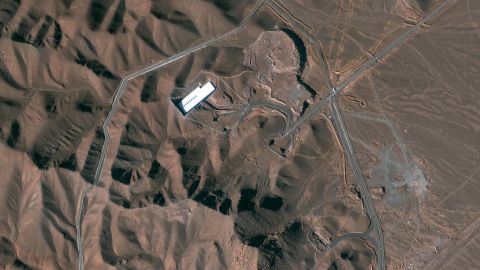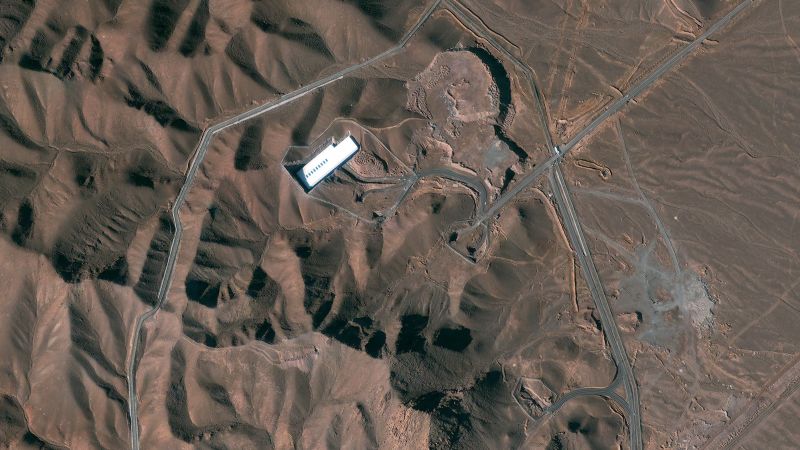Abu Dhabi, UAE
CNN
—
Uranium particles enriched to near bomb-grade levels have been found at an Iranian nuclear facility, according to the UN’s nuclear watchdog, as the US warned that Tehran’s ability to build a nuclear bomb was accelerating.
In a restricted report seen by CNN, the Vienna-based International Atomic Energy Agency confirmed that uranium particles enriched to 83.7% purity – which is close to the 90% enrichment levels needed to make a nuclear bomb – had been found in Iran’s Fordow Fuel Enrichment Plant (FFEP), an underground nuclear facility located some 20 miles northeast of the city of Qom.
The report says that in January, the IAEA took environmental samples at the Fordow plant, which showed the presence of high enriched uranium particles up to 83.7% purity.
The IAEA subsequently informed Iran that these findings were “inconsistent with the level of enrichment at the Fordow plant as declared by Iran and requested Iran to clarify the origins of these particles,” added the report.

Iran’s stockpile of uranium enriched up to 60% had also grown from 25.2 kg to 87.5 kg since the last quarterly report, according to the confidential IAEA report.
The IAEA report said discussions with Iran to clarify the matter are ongoing, noting that “these events clearly indicate the capability of the IAEA to detect and report changes in the operation of nuclear facilities in Iran.”
In an exclusive interview with CNN’s Christiane Amanpour on Tuesday, Iran’s Foreign Minister Hossein Amir-Abdollahian did not directly respond to a question on reports of the enrichment.
Amir-Abdollahian said that the deputy director general of the IAEA, Massimo Aparo, had visited Iran on two occasions in the past weeks and that the IAEA’s director general Rafael Grossi has been invited to visit the country.
“We have a roadmap with the IAEA. And on two occasions, Mr. [Massimo] Aparo, Mr. [Rafael] Grossi’s deputy, came to Iran in the past few weeks, and we had constructive and productive negotiations. And we have also invited Mr. Grossi to come and visit Iran soon,” Amir-Abdollahian told CNN. “Therefore our relationship with the IAEA is on its correct, natural path.”
Last year, Iran removed all of the IAEA equipment previously installed for surveillance and monitoring activities related to the nuclear deal, formally known as the Joint Comprehensive Plan of Action (JCPOA).
The move had “detrimental implications for the IAEA’s ability to provide assurance of the peaceful nature of Iran’s nuclear programme,” the IAEA report stated.
A US State Department spokesperson on Tuesday said the IAEA report potentially poses a “very serious development.”
“We are in close contact with our allies and partners in Europe and the region as we await further details from the IAEA on this potentially very serious development,” added the spokesperson.
Under Secretary of Defense for Policy Colin Kahl on Tuesday said that “Iran’s nuclear progress since” the Trump administration withdrew the US from the 2015 nuclear deal “has been remarkable,” adding that in 2018, when the US withdrew, “it would have taken Iran about 12 months to produce one fissile, one bomb’s worth of fissile material.”
“Now it would take about 12 days,” he said.
More than a year of indirect negotiations between the US and Iran to try to restore the 2015 nuclear deal broke down in September 2022. Tensions between the two countries only worsened after Iran’s crackdown on nationwide protests at home, and as Tehran supplied Russia with drones in the Ukraine war.
Kahl said Tuesday that the agreement is “on ice.”

